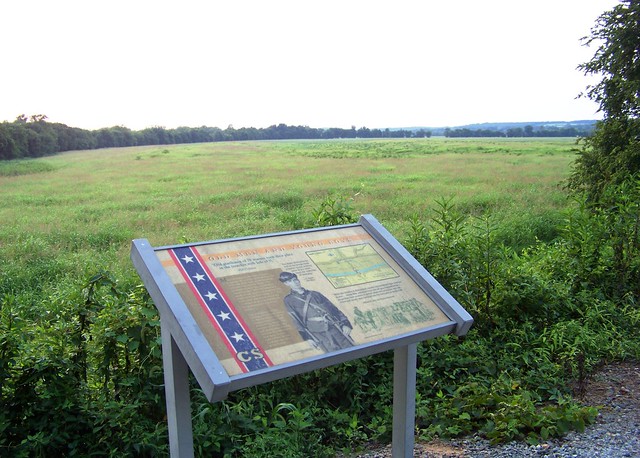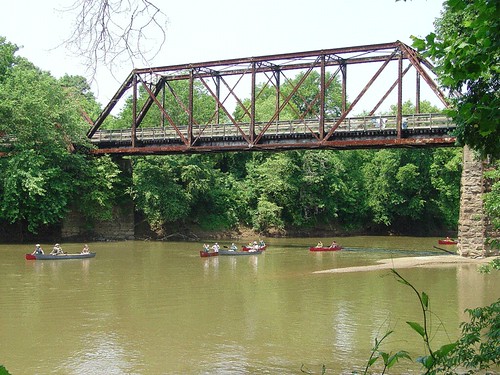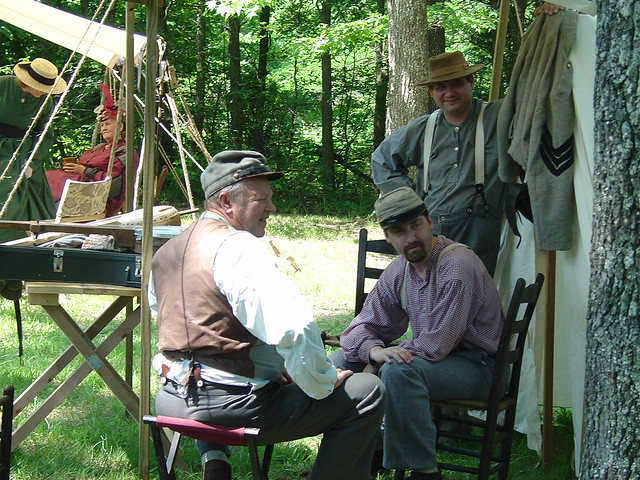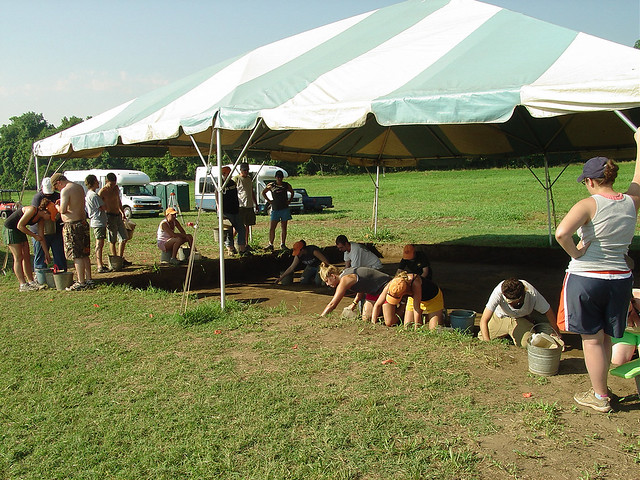Read Our Blogs
Where History Lives and Nature Thrives: Staunton River Battlefield
We are delighted to introduce the Park of the Month for June - Staunton River Battlefield
It was a muggy June day in 1864 during the American Civil War, as Brigadier Generals James H. Wilson and August Kautz of the Union Cavalry were leading a raid through Central and Southern Virginia. The Battle of Staunton River Bridge took place at this state park, where the history of that battle is preserved for future generations.

The site where the Battle of Staunton River Bridge took place June 25, 1864

Paddlers explore the historic Staunton River Bridge
Wilson and Kautz's mission was to destroy as much rail as possible between Lynchburg, Virginia and the Confederate supply center in Petersburg, thereby blocking the Confederate troops from getting essential supplies. By the time the Union troops reached Randolph, where the Richmond and Danville Railroad crossed the Staunton River, Wilson and Kautz had destroyed 60 miles of rail. At the Battle of Staunton River Bridge, the Federal forces were turned back and the bridge was saved.
Today the historic bridge and battle site are preserved at Staunton River Battlefield State Park, a site on the Virginia Civil War Trails. Each year the park commemorates the Civil War battle that occurred here on June 25, 1864. A group of 700 ragtag Confederates labeled as “old men and young boys” held off an assault of over 5,000 Union cavalry, who were attempting to cross the Staunton River. This year marks the Sesquicentennial of the Battle of Staunton River Bridge, with a special commemoration to be held June 21-22 in partnership with the Historic Staunton River Foundation.

Reenactors interpret the Civil War history at annual commemorations of the battle
The park covers 300 acres and features trails and landmarks that showcase both the history and beauty of the region. There is a 0.75-mile nature trail with wildlife observation towers overlooking the wetlands of the Staunton River. There is also a 1.2-mile trail through the battlefield itself, including over the famous bridge where the standoff between the troops occurred. Along the trail are historic earthworks that were built by the Confederates in preparation for battle. The park also includes the historic mansion at Mulberry Hill. This home of the Carrington and McPhail families played a role in the battle serving as Union headquarters, and is open for special events.
In addition, there are two visitor centers to welcome guests to the park. The Clover visitor center, built through a partnership with Old Dominion Electric Cooperative, showcases the famed battle and electric energy production. Across the river in Charlotte County, Randolph Station visitor center houses Native American findings from the on-park site of the Longwood Archeological Field School in a restored train station.
The path to becoming a state park was a long one for this Civil War battlefield. It all started in 1910 when the land was donated to Civil War veterans with the intention of it becoming a memorial or park. However, nothing was done with the site until 1955 when a monument was placed on the land and the Commonwealth of Virginia proceeded to purchase the six and a half acres surrounding the memorial. The land sat untouched for many years until Old Dominion Electric Cooperative decided to build a power station on the surrounding property. This led to many appeals that spared the Battlefield area itself from development. You can read more about the park’s history here.

The butterfly garden along the trail offers a quiet respite for walkers

Archeological research is conducted by the Longwood University Archeological Field School
Today, Staunton River Battlefield State Park is an ideal place to relax and be enlightened about the past. A variety of programs interpret both the Civil War history and the environmental aspects of the park. In summer the park offers guided paddling trips along the Staunton River. Hikers will discover a butterfly garden planted along the trail. Each year the park hosts an environmental field school for area high school students, as well as the ongoing archeological exploration. Interpretive programs and special events throughout the year enable visitors to experience history and nature in a dynamic way. For hours of operation or more information, contact the park at 434-454-4312 or email here.
If you have read the article and have a question, please email nancy.heltman@dcr.virginia.gov.
Search for blogs
By Park
Categories
Cabins
Camping
Fishing
History and Culture
Other
Programs and Events
Trails
Volunteers
Water Fun
Archive
2024
2023
2022
2021
2020
2019
2018
2017
2016
2015
2014
2012














